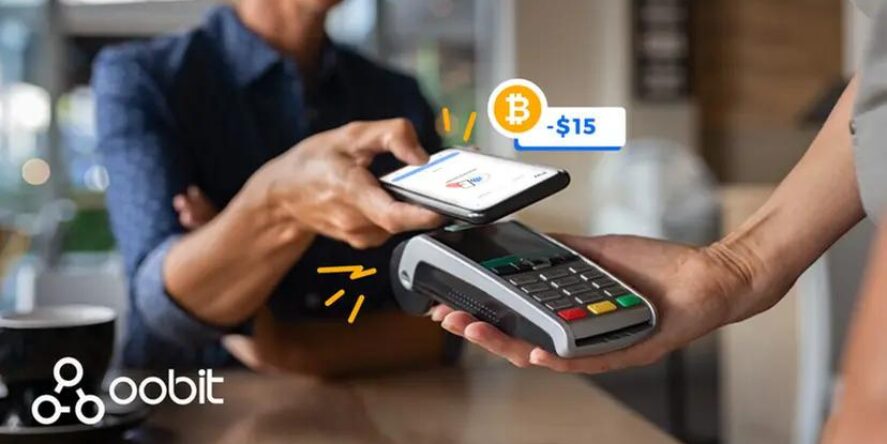The way we pay has come a long way. We started with cash, moved on to plastic cards, and now most people tap their phones at the checkout. But even with all these changes, one thing hasn’t really shifted: the system behind it all. Underneath those modern interfaces, we’re still relying on the same banks, cards, and networks we’ve used for decades.
Crypto promised to change that. It was supposed to give us a faster, more open, and more direct way to pay. And while there’s been a lot of hype, most crypto payment options haven’t really delivered on that promise. Until now.
Tap-to-pay crypto, which lets you pay straight from your digital wallet by simply tapping your phone, is finally here. And it might just be the missing link that gets crypto into the hands of everyday users.
The Payment Experience Is Changing, But Not Enough
At first glance, it feels like payments have already gone fully digital. You can walk into a store, wave your phone at the terminal, and walk out without touching cash or pulling out a card. Apps like Apple Pay and Google Pay feel fast and futuristic. But they’re still running on the same old tracks.
Every time you tap your phone, a traditional card is working behind the scenes. It might be virtual, but it’s still a Visa or Mastercard. That means your bank is still involved, the merchant still pays fees, and the transaction still goes through the same middlemen as before.
We’ve made the front end look better, but we haven’t changed the core of how payments work.
Apple Pay Looks New, But It’s Built on Old Tech
Apple Pay might feel seamless, but every time you use it, it’s still using a card tied to your bank. It might be a digital card saved in your wallet app, but it’s still a card that needs to be issued, verified, and approved by a bank. When you tap, the payment gets routed through the same networks we’ve been using for decades.
You still have to go through the steps of ordering a card, activating it, sometimes completing extra identity checks, and linking it to your account. It feels new on the surface, but behind the curtain, it’s business as usual.
Crypto Promised Something Better, So Why Are We Still Using Cards?
A lot of the current “crypto cards” out there are just rebranded prepaid Visa or Mastercard products. To use them, you often have to manually convert your crypto to fiat, load it onto the card, and then spend it like any other debit card.
It works, technically, but it’s far from smooth. It adds extra steps, involves more fees, and still depends on the same card networks. In short, it forces crypto into the same old system it was supposed to replace.
It’s like downloading a song, burning it onto a CD, and then putting that CD into your car, when you could just stream it instantly from your phone.
Tap-to-Pay From a Wallet Changes the Game Completely
This is where things get exciting. Instead of using a card, either physical or virtual, tap-to-pay crypto wallets let you pay straight from your phone using the crypto in your wallet. You don’t have to convert it ahead of time. You don’t have to preload anything. And you don’t need a bank or card issuer to make it work.
You just open your wallet app, tap your phone at the terminal, and the transaction is done. Your crypto gets automatically converted in the background, and the merchant gets paid in their local currency, without having to know you used crypto at all.
For the user, it feels like magic. And for crypto, it finally delivers on the promise of making payments simple and direct.
Why It’s Possible Now
A few years ago, this wouldn’t have worked. Crypto was too slow, too expensive, and too confusing for most people. But that’s changed.
Thanks to layer 2 networks like Lightning and Optimism, crypto transactions can now be completed quickly and cheaply. At the same time, off-ramp providers have gotten better at converting crypto to fiat in real time. You no longer have to go through manual processes or wait hours for funds to settle.
Most stores now have NFC payment terminals, which means the hardware is already in place. You don’t need a special setup. You just need a wallet that can talk to the terminal, and a provider that can handle the conversion behind the scenes.
And while regulation still varies depending on where you live, a growing number of countries now support crypto payments in some form. The ecosystem has matured enough that real-world use cases are not only possible, they’re practical.
Oobit Makes It Real, No Card, No Fuss, Just Tap
Oobit is one of the first platforms to turn this idea into something you can actually use today. It’s a mobile-first app that lets you spend your crypto in the real world, using the same tap-to-pay experience you already know from Apple Pay, but without needing a bank or a physical card.
Here’s how it works: You fund your Oobit wallet with Bitcoin, Ethereum, or another supported crypto. Then, when you’re at any store that accepts tap-to-pay (which is pretty much everywhere these days), you open the app and tap your phone at the terminal. Oobit handles the rest.
It automatically converts your crypto in the background, in real time, so the store gets paid in regular fiat currency. The cashier doesn’t need to know you used crypto. There’s no QR code scanning, no wallet addresses, and no awkward explanations. Just tap and go.
What makes Oobit stand out is how invisible it makes the crypto part. It hides the complexity and delivers a clean, smooth experience that feels just like using any other mobile wallet. You don’t need to preload a separate card or go through any hoops. Additionally, Oobit leverages the existing infrastructure behind point-of-sale (POS) systems, allowing users to make contactless payments at any retail location that accepts Visa or Mastercard, without requiring retailers to adopt new technologies.
Oobit also supports a growing number of assets and is actively expanding into more regions. As it grows, it’s turning the idea of crypto payments from something niche and technical into something anyone can use, whether they know what a blockchain is or not.
This Feels Like the Spotify Moment for Payments
Think back to how we used to listen to music. First it was CDs, then MP3s you had to download and organize. Then came streaming, and everything changed. You didn’t need to understand how it worked. You just opened the app and pressed play.
That’s what tap-to-pay crypto feels like. It takes all the complexity of crypto payments and puts it behind the scenes. You don’t have to understand blockchains, off-ramps, or gas fees. You just tap your phone and pay.
When crypto becomes that easy, that natural, that boring, that’s when adoption happens.
Final Thoughts: The Future of Payments Is Already Here
We’ve spent years talking about how crypto would change the world. But most of that change hasn’t reached the average person standing at a store, trying to buy coffee.
That’s finally starting to shift. Tap-to-pay crypto wallets like Oobit are cutting out the middlemen, simplifying the experience, and giving people a real reason to use crypto outside of just holding it as an investment.
It’s fast. It’s secure. And it’s something anyone can do.
Payments are finally catching up to the promise of crypto. Not with hype. But with something simple, practical, and real.
And it all starts with a tap.





























